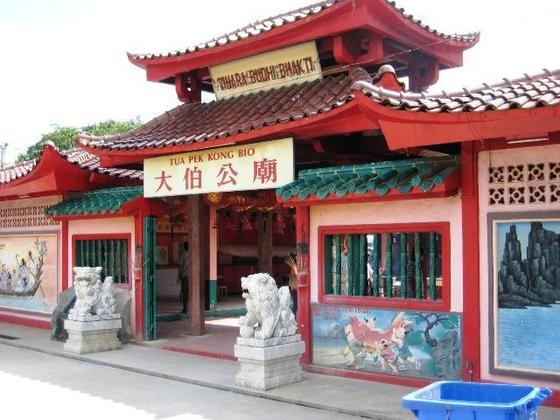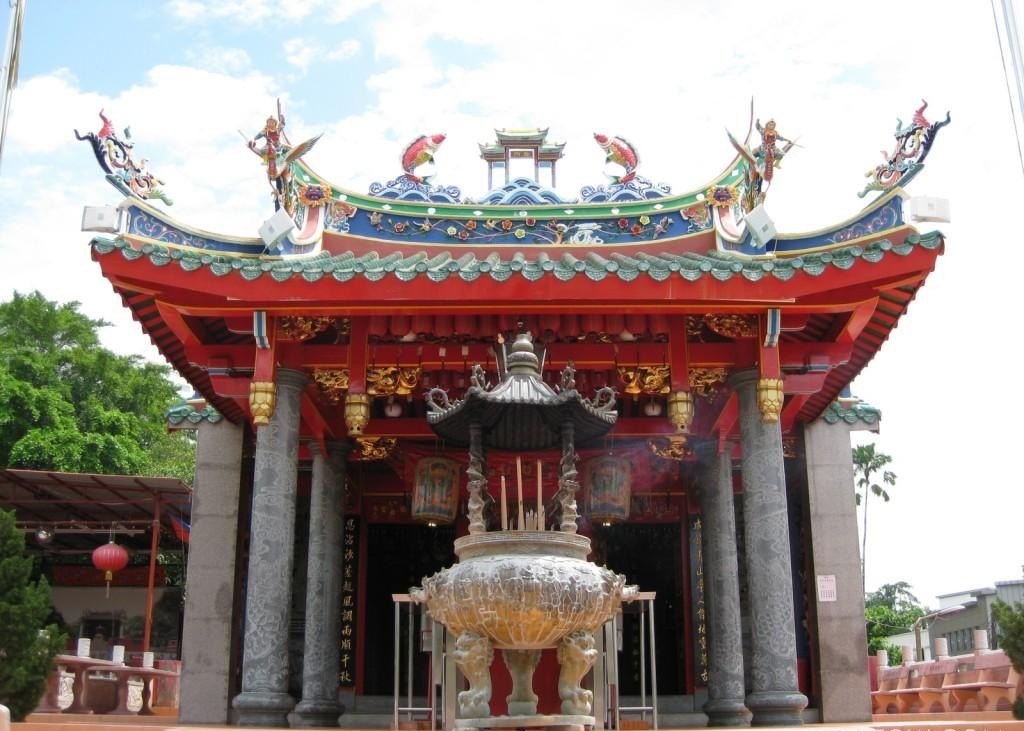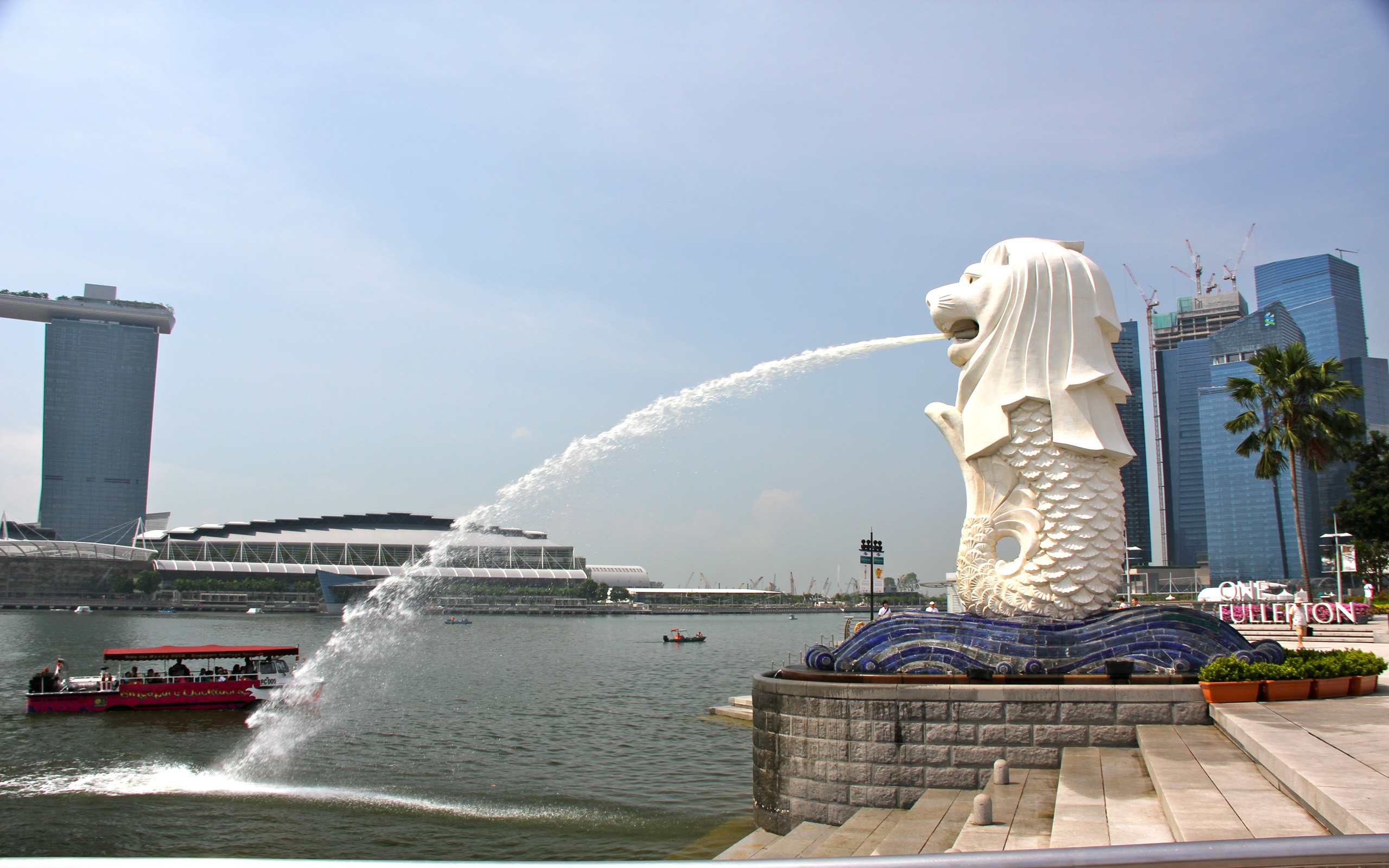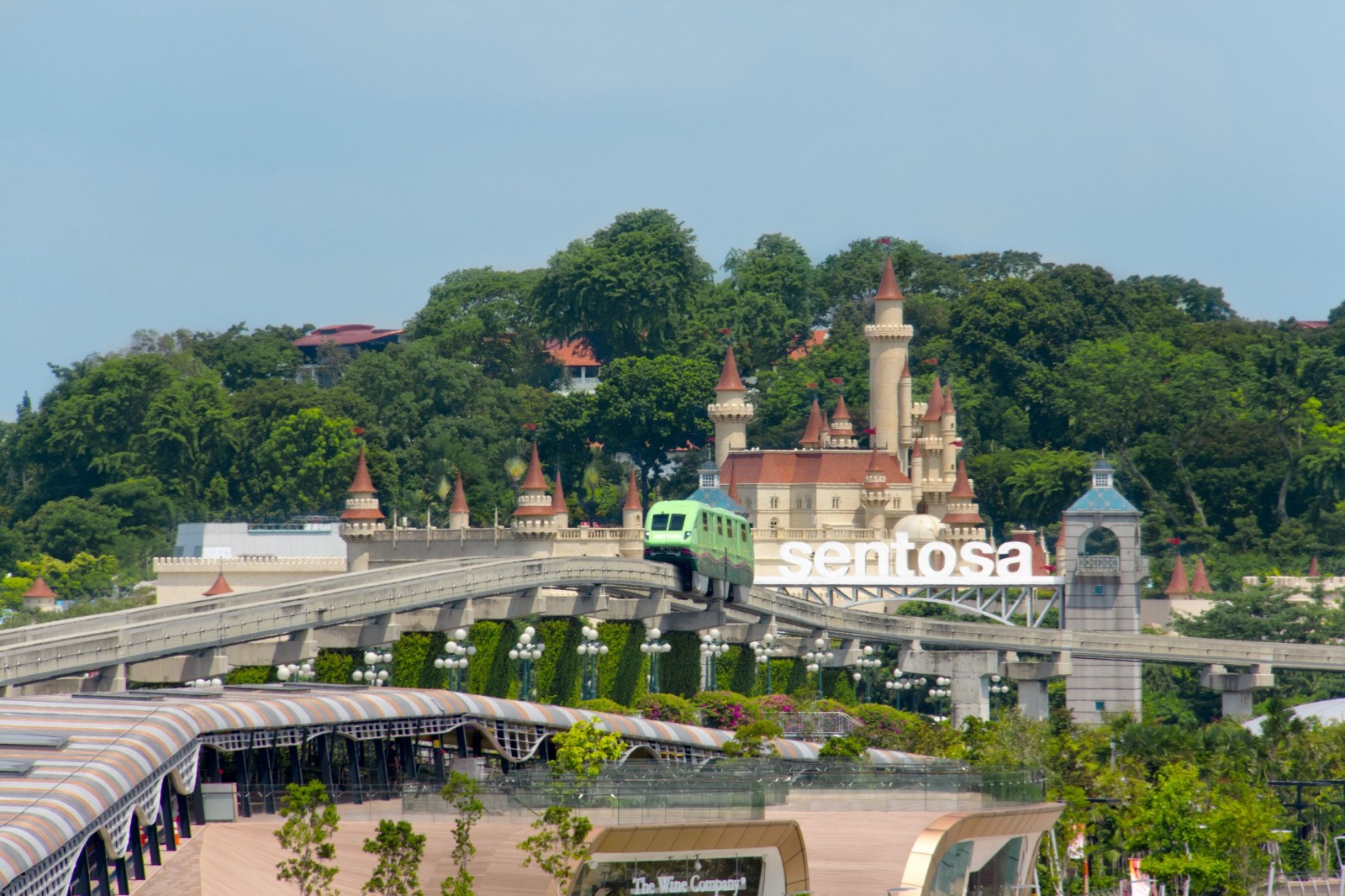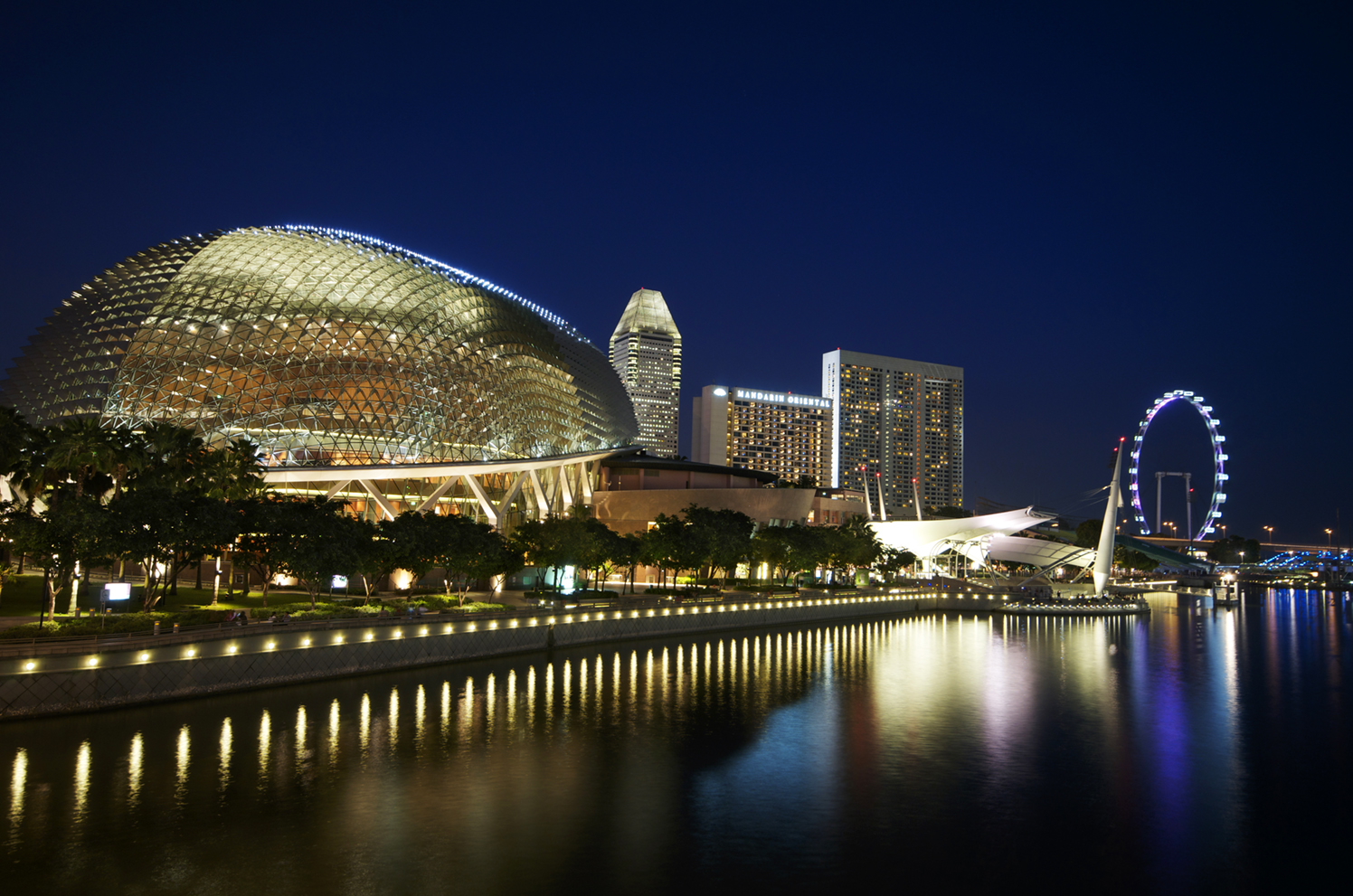Singapore /Singapore /Singapore
Sight Address : Tua Pek Kong Temple,Sitiawan, Malaysia.Edit
Detail InformationEdit
Tua Pek Kong (Chinese: 大伯公; pinyin: Dàbó Gōng Hakka: Thai phak koong: Hokkien: Tuā-peh-kong), literally means “Grand Uncle”, is one of the pantheon of Malaysian Chinese Gods. It was believed the date Tua Pek Kong arrived in Penang was 40 years before Francis Light in 1746.Tua Pek Kong was a man named Zhang Li (张理) from the Hakka clan. His Sumatra-bound boat was struck by wind and accidentally landed on Penang island of Malaysia, which at that time had only 50 inhabitants. After his death, the local people began worshipping him and built the Tua Pek Kong temple there. Today Tua Pek Kong is worshipped by Malaysian Chinese throughout the country. Tua Pek Kong is often mistaken for Tu Di Gong, partially because of their physical similarities.Chung Keng Quee was a principal donor to the Haichu-yu (Sea Pearl) Tua Pek Kong Temple (1865 and 1868) in Tanjung Tokong, Penang. Another famous temple is the Tua Pek Kong Temple, Sibu with its 7-storey pagoda and has become a landmark for Sibu.The Loyang Tua Pek Kong Temple, off Loyang Way, was established in the 1980s. The temple owes its existence to a group of friends, who on finding figurines of different religions abandoned on a beach, brought them together and housed them under a unique mixed-religion temple. The Loyang Tua Pek Kong Temple has Buddhist, Hindu and Taoist deities and a Muslim Kramat (shrine) within its premises.
HistoryEdit
In the 1980s a group of fishing buddies, including Paul Tan and Huang Zhong Ting, stumbled across Buddhist, Hindu and Taoist statues strewn across the beach at the end of the Loyang Industrial Area. They built a small hut made of bricks and zinc sheets to house the figurines. This humble construction served as a makeshift temple. It also included a Kramat to honour a holy Muslim man. It is believed that a sign was received by some people to build the holy kramat here. Soon, scores of people, mainly those working in the Loyang Industrial Area, were visiting the temple. Miraculous powers were attributed to the temple as devotees claimed that their prayers for prosperity and wealth were never denied. Unfortunately however, in 1996, the hut was razed to the ground by a fire. The Taoist statue of Tua Pek Kong, the God of Prosperity, was the only one that survived and escaped from the fire unscathed. New premises to house the deities and the kramat had to be built. Through public donations that poured in, a new temple complex was built over a 1,400 sq m area at the same site. The temple was named after the Prosperity God, Tua Pek Kong the statue which miraculously escaped from the fire.The temple is still run by public donations. The number of visitors to the temple is around 20,000 per month despite the fact that bus services are limited to weekdays and the last bus stop is a half an hour walk away. The temple still accepts statues of deities and any devotee can adopt or take a figurine of a deity for free after offering a prayer. The temple complex is open 24 hours a day and it has become a tourist attraction in the recent years. One of the temple’s claims to fame is the presence of a 2 m tall statue of the Hindu God Ganesha, which is said to be the tallest Ganesha statue in any temple in India or Singapore. Another attraction here is the lighting of strings of non-hazardous firecrackers.In June 2003 the lease on the land on which the temple is situated expired. The temple authorities therefore procured a new site close to the present temple. A new temple is expected to be constructed at this new site in a few years’ time. Until then, the temple is expected to remain at its current location with a lease extension being granted for the land on which it is situated.
Must SeeEdit
Must see
Visiting TimeEdit
N.A.
Closed OnEdit
N.A.
Best Season to VisitEdit
June to July and November to December.
Best Time To VisitEdit
N.A.
Time Required for SightseeingEdit
N.A.
Ticket Required : No Edit
Individual National Adult : N.A.
Kids : N.A.
Individual Foreigner Adult : N.A.
Kids : N.A.
Still Photo Camera : N.A.
Video Camera : N.A.
Guide Required : No Edit
Approximate cost: N.A.
Dress Code (If Any) : No Edit
Dress Require: N.A.
Restaurants NearbyAdd / Edit
How to ReachEdit
Taxi : Taxis are generally very hard to get during peak hours (Mon-Fri 7:00am – 9:30am and Mon-Sat 5:00pm – 8:00pm) and on rainy days. If you are at a hotel, have conceirge call you a taxi. If you are out about town and have access to a cell phone- calling for a taxi will cut your wait time by 20 to 30 minutes. All taxis are fitted with meters; all are air conditioned; the majority of the taxis are 5-seaters; about 90% of taxis have radiophones; call booking is done via GPS or digital voice dispatch. All passengers must fasten their seat belts by law.
For taxi Booking fee is SGD $2.3. Minimum fare for taxi is SGD $3 for first 1Km. Fare above minimum fare until 10Km is SGD $0.55 per Km. Fare above 10Km is charge SGD $0.628 per Km. Taxi Waiting charges per hour is SGD $17.6. Peak Hours charges is diffrent.
Bus : Public buses run daily from 5.30am to midnight. Extended night services cost slightly more (a flat rate ranging from $1.50-$3.00). Otherwise, most fares depend on distance travelled and range from 67 cents to $1.58 for air-conditioned comfort (almost all public buses in Singapore have air-conditioning today). There are also “feeder” bus services that charge a flat rate of 67 cents. Each bus should not take more than 15 to 20 minutes to arrive at the bus stop.
Train : Singapore MRT system is very well connected to different parts of Singapore and very clean! If you have the time and plan to explore around little Sunny island, get the the Singapore Tourist Pass!
It runs 6am-12mn, fares start at S$1 (70cents in EZ link). Tickets can be purchased in all MRT stations. You just have to insert your money through the ticket machine. Rush hour’s usually 7am-9am, 11am-2pm and 4pm-7pm.
Air : Changi Airport is the country’s main airport. From the airport there are a number of ways to get into the city:
Taxi is easiest – simply follow the signs after clearing customs. Meters are always used in Singapore and prices are reasonable. A trip to the city during the day will be between $20-$30 including $3-5 airport surcharge. An additional 50% surcharge applies between midnight and 06:00.
Limousines charge a flat $50 to anywhere in the city and are a pretty good deal after midnight, as you can skip the queue and avoid the surcharge. The same pricing applies to chartering van-sized MaxiCabs, which are good for large families or if you have lots of baggage.
Shuttle – Shared six-seater MaxiCab shuttle service to designated areas/hotels costs $7 and can be booked in advance or in the arrivals hall. 6AM-2AM, every 15-30 min.
Subway – MRT trains run from a station between T2 and T3, but you’ll need to change trains at Tanah Merah to a city-bound train: just exit through the left hand side door and cross the platform. The 30 min ride to City Hall station costs $1.90 plus a refundable $1 deposit, and trains run 05:31-23:18.
Bus – Bus terminals can be found in the basements of T1, T2 and T3. 06:00-23:59 only. Fares are less than $2.00, exact fare required (no change given) if you pay cash.
Others : N.A.
Things to CarryEdit
Safety / WarningEdit
- Please be advised that all bags and personal items are subject to inspection.
HelplineEdit
- Police: 999
- Emergencies/Ambulance/Fire Brigade: 999
- Police Hotline: 1800 353 0000
- Non-emergency ambulance: 1777
- Flight Information (24-hours): 1800-542 4422
- Tourism Information (24-hours): 1800-736 2000
